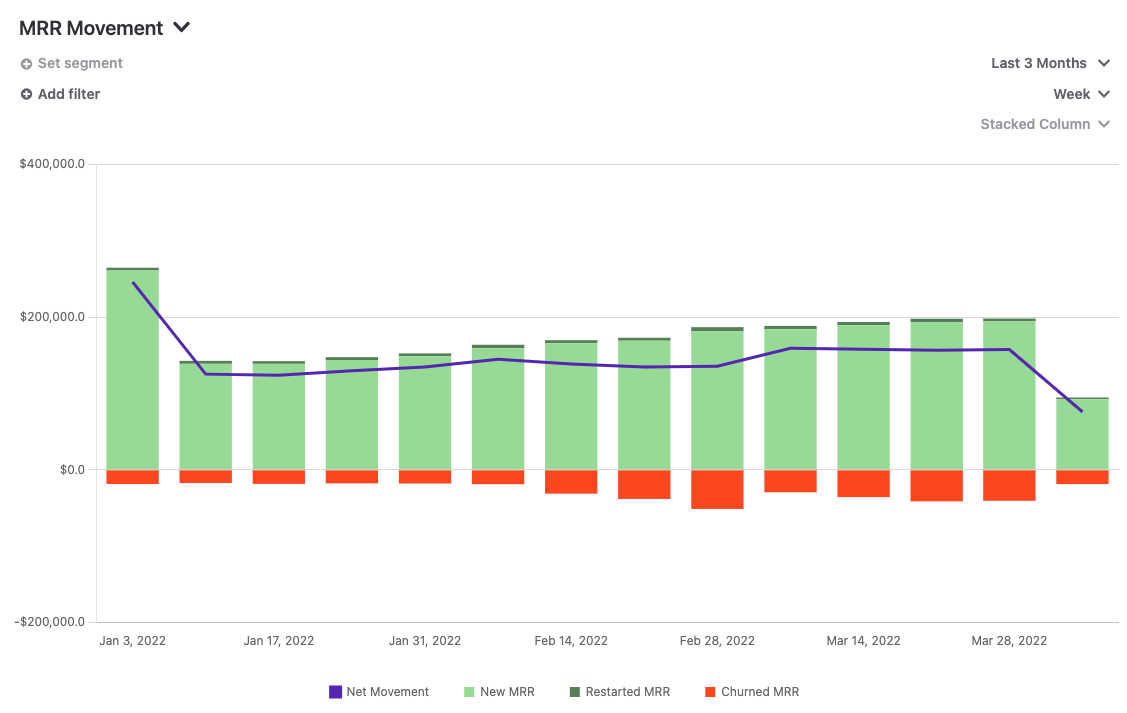MRR Movement
The MRR Movement chart analyzes the components of MRR separately, helping to understand customer behavior and, consequently, what makes revenue grow or contract.
This chart, like the MRR, operates on a monthly basis and uses the normalization process to include revenue from subscriptions of different durations.
It consists of the following components:
- New MRR: The MRR increase due to new subscriptions started in the period under consideration.
- Restarted MRR: The MRR increase due to previously expired subscriptions that restarted in the period under consideration.
- Resumed MRR: The MRR increase due to previously paused subscriptions that resumed in the period under consideration.
- Churned MRR: The MRR loss due to subscriptions which have passed their expiry date without having been renewed.
- Paused MRR: The MRR loss due to subscriptions which have been paused. Paused subscriptions don't generate revenue, but in general they can be paused for a limited amount of time, thus they are supposed to restart in the near future.
- Product Change MRR: The MRR increase or loss due to subscriptions that have upgraded, crossgraded or downgraded. In general, when a subscriber goes, for example, from monthly subscription to a yearly subscription you might expect the MRR to decrease because the yearly price divided by 12 months is generally lower than the monthly price. Likewise, if a subscriber goes from a yearly subscription to a monthly subscription you can expect the MRR to increase.
MRR Movement shows how much revenue increased or decreased in the reporting period compared to the previous period and is calculated using this formula:
Net Movement = New MRR + Restarted MRR + Resumed MRR Product Change MRR - Churned MRR - Paused MRR

Updated about 1 year ago
